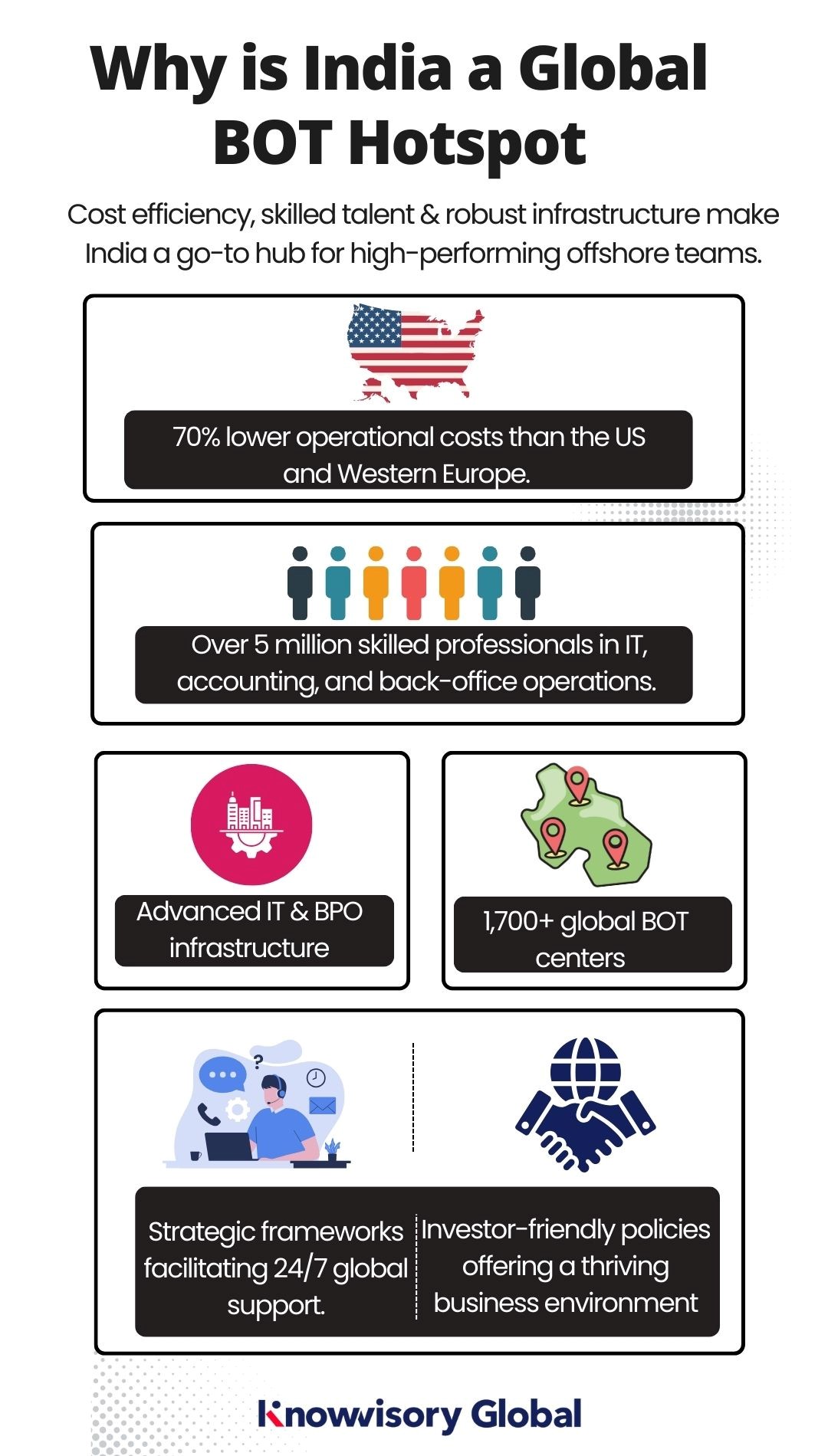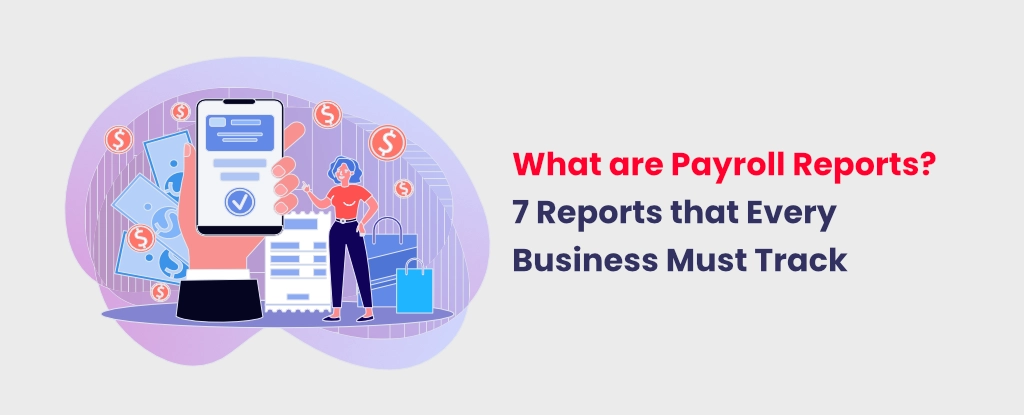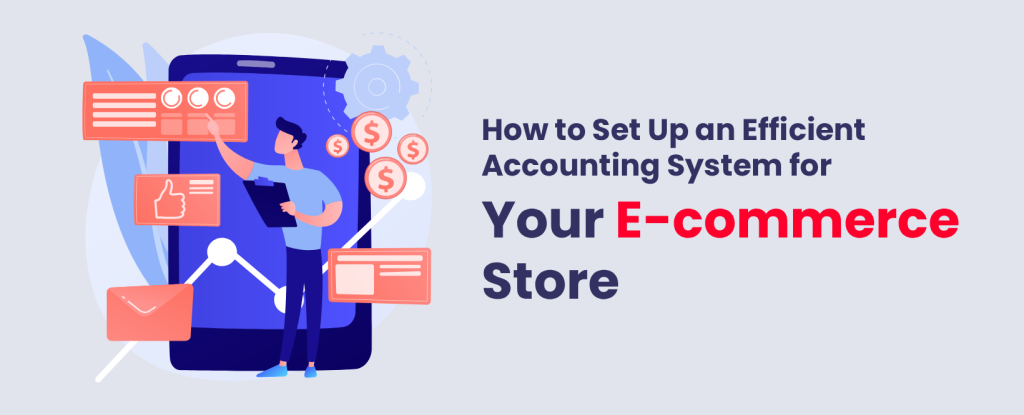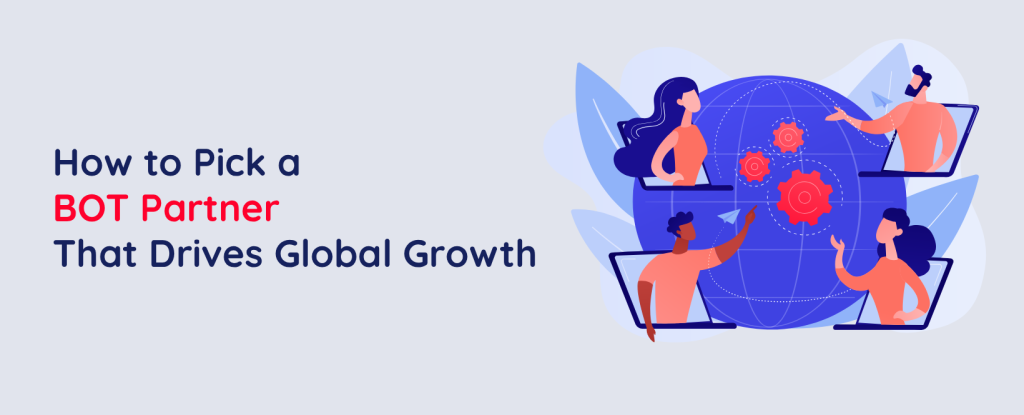But let’s be honest – the process is rarely as simple as it sounds. Between setting up legal entities, finding office space, building teams, and navigating compliance, most leaders realize expansion is a marathon they didn’t train for.
Outsourcing used to be the “shortcut” till now. You sign a contract, hand over the work, and let a vendor take care of it all. For a while, that worked for most businesses. Costs went down, operations scaled, and the internal teams found some breathing room. But there was a catch – outsourcing often came with loss of control. Processes started feeling foreign, communication slowed down, and suddenly, your own business didn’t feel like yours anymore.
That frustration led to the development of a more dependable global expansion model – the Build-Operate-Transfer (BOT) model. It’s like a middle path between outsourcing and building from scratch – where a partner sets up your offshore center, handles recruitment, infrastructure, payroll, and daily operations, and then, once you are fully ready, hands over the complete operations to you. The team, the process, and the infrastructure become yours.
The BOT model reduces risks, speeds up entry into new markets, and provides a structured pathway to building global capacity. With its multitude of benefits, the model quickly gained traction.
And when it comes to building global capacity, India has always been a frontrunner.
The reasons are clear and backed by numbers. Let’s look at them one by one.
1. Large Talent Pool
Every year, India produces more than 1.5 million engineers and thousands of finance and IT graduates. In fact, currently India has around 4.85 lakh registered CAs, and the number is rapidly growing.
This makes the country a hub of highly skilled talent. Twenty years ago, most offshore teams in India focused on call centers or basic IT services. Today, Indian professionals are building products for fintech, designing AI-driven healthcare systems, and running global supply chain analytics.
With over 120,000 AI and machine learning professionals and more than 185 dedicated AI/ML centers of excellence, India is no longer a place for entry-level coding or back-office operations; it’s the destination to build your global workforce.
2. Cost Efficiency Without the Compromise
Even with rising wages, India offers 40–70% lower operating costs compared to Western markets. Salaries, infrastructure, and ongoing expenses are simply more affordable —without sacrificing quality.
But it’s not just about paying less. The build-operate-transfer services allow you to own the value you build. Instead of spending millions on outsourcing contracts year after year, companies can build their own capability centers — making a swift shift from renting services to owning operations – at an affordable price point.
3. India’s Growing GCC (Global Capability Center) Ecosystem
India is often called the “GCC Capital of the World.” According to the Nasscom report, over the past 5 years, the number of GCCs in India has crossed 1,700 by 2024, employing 1.9 million people and generating $64.6 billion in revenue.
And this is not slowing down. By 2030, the market is expected to reach $100 billion, employing 2.5 million professionals.
For BOT players, this scale definitely matters. A thriving GCC ecosystem means better infrastructure, investor-friendly policies, and a thriving talent pipeline ready to step in and support complex operations and drive innovation. Whether you’re in retail, banking, aerospace, or healthcare, chances are your competitors already have an offshore team in India.
4. Time Zone Advantage
Another benefit of setting up a Build-Operate-Transfer services center in India is the time zone advantage. The U.S. and India operate in different time zones. So, while you sleep, your team in India will be pulling up reports and getting analytics and insights ready for you to work on. This translates to round-the-clock productivity – not just late-night customer support.
Many companies now design their workflows so that when the U.S. team signs off, the Indian team picks up, keeping the projects moving 24/7.
5. Strong Policies and Government Support
Setting up operations in a new country can be tricky – unless there’s an ecosystem already built for it. The Indian government has rolled out various initiatives and policies to support the growth of global businesses in the country.
- India has the lowest corporate tax rates for new units in Asia.
- There are various Special Economic Zones (SEZs) and IT parks that provide tax breaks, high-speed connectivity, and plug-and-play infrastructure to global players.
- States like Karnataka and Telangana provide infrastructural support and strong financial incentives for setting up GCC centers in India.
6. World-Class Infrastructure in Tier-1 and Tier-2 Cities
India has been making steady moves to make itself a business-friendly BOT location. Bengaluru, Hyderabad, and Pune are already popular locations for BOT model setup. But now, tier-2 cities like Coimbatore, Visakhapatnam, and Jaipur are also stepping up.
- There are numerous GCC-friendly policies in states like Karnataka, which houses over 30% of India’s GCCs.
- Emerging tier-2 cities like Visakhapatnam and Coimbatore are also becoming popular offshore hubs.
In fact, at least 115 new GCCs are expected to come up annually by 2030, with improved infrastructure and favorable policies
7. Shift From Cost to Value
Today, nearly 86% of build-operate-transfer centers in India can handle advanced work like data analytics, financial planning and management, marketing, legal processes, and R&D. Companies are treating these centers not just as support units, but as possible revenue streams (profit centers).
That shift is huge. It gives companies the confidence to set up innovation hubs in India that not just support their existing process but also directly boost their global bottom line.
8. Building Resilience in Uncertain Times
If the last few years have taught us anything, it’s that disruptions can happen anytime —pandemics, supply chain breakdowns, geopolitical tensions we’ve seen them all. Companies that spread operations across regions are better equipped to adapt.
With a BOT center in India, U.S. businesses are not just cutting costs, they are building resilient teams that keep the engine running even if one part of your global operations slows down or comes to a standstill.
Real-World Example
Some of the leading GCCs in India include
| Company Name | Location | Industry |
| Microsoft India Global Delivery | Multiple Locations | Product development, cloud computing, and AI-driven innovations |
| Google India | Bengaluru and Hyderabad | AI model development and platform optimization |
| Amazon India | Hyderabad, Bengaluru, and Chennai | Cloud solutions, artificial intelligence, and customer experience management |
| Goldman Sachs | Bengaluru | Financial services, risk management, and technological innovation |
| JP Morgan Chase | Bengaluru, Mumbai, Noida, Pune, and Hyderabad | Fintech innovations, digital banking, AI-driven financial models |
| Walmart Global Tech India
|
Bengaluru and Chennai | AI-powered pricing, personalization engines, predictive logistics, and supply-chain optimization |
Other prominent players include IBM, Accenture, Intel, Cisco, Salesforce, Target, Standard Chartered, Kimberly-Clark, Lowe’s, GE, Wells Fargo, Carelon Global Solutions, Mercedes, American Express, Mercer, Pfizer, and many more.
Now that’s the Build-Operate-Transfer story in action.
So, Why Should You Choose India for Build-Operate-Transfer services?
If we analyze carefully, three advantages of build-operate-transfer stand out:
- Depth of Talent – India not just has workforce volume, but also the skills and the power to align with tomorrow’s technologies.
- Economic Viability – BOT offers cost savings today, ownership value tomorrow.
- Ecosystem Maturity – India has all the policies, infrastructure, and experience that reduce risks.
Global companies want more than cheap outsourcing now. They want speed, control, innovation, and resilience. India’s BOT model delivers all of that in one package.
It’s Time to Plan Your Global Expansion
Expansion will always carry risk. But with BOT in India, businesses don’t have to go in blind. They can test the waters, operate with a partner, and eventually own a fully functioning offshore operation – all while tapping into the world’s deepest talent pool at a fraction of the cost.
In many ways, BOT model in India isn’t just about business strategy. It’s about future-proofing. The companies that embrace it today aren’t just cutting costs, they’re building the kind of global agility that defines tomorrow’s market leaders.
So, if you’re a business owner operating in the USA, planning your next move, the question isn’t whether you should explore BOT in India. The real question is: how soon can you get started?
Reach out to us at KnowVisory Global and plan your next move. From setting up your offshore delivery center to managing recruitment, running day-to-day operations, and meeting compliance, we take care of it all until you’re ready to own the team and the process. Partner with us to build not just capacity, but long-term competitiveness for your business.



